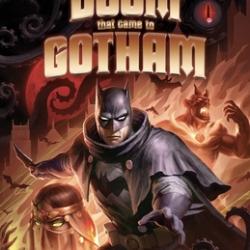Review of The Book of Life, Directed by Guillermo del Toro
The Book of Life is one of those films that should have been quite good. The components are there. Producer Guillermo Del Torro’s brilliant visual imagination is clearly evident. Stylistically it is a mashup of Spongebob Squarepants and Toy Story, full of charismatic puppet-like characters distinct from anything I’ve ever seen before. Set around the Day of the Dead, where families happily gather to remember their ancestors, it wonderfully captures the vibrant color and language of Mexican culture.
The plot follows a fairly predictable love story, but it’s a good one – the tried and true stuff of heroism, honor, and family that keeps resurfacing in humanity’s stories because that is what we admire and long for. I couldn’t help but see similarities to Greek mythology, where the gods touch off a huge human conflict because of their bickering and betting on the affairs of men. It’s a Mexican myth – a fairytale, of sorts – and in this sense quite charming.
The main character, Manolo, is a bull-fighter out of obligation to his father (the Manolo’s represent a long line of bull fighters). He aspires to be a musician, however, and is most happy with his guitar, which he often wears strapped on his back along with a sword in a clever juxtaposition of the identities he assumes at various points in the film. Manolo and his best friend Joaquin, a great warrior of decidedly less integrity than Manolo, are both in love with the same girl – Maria. A game of “let the best man win” thus commences.
As the protagonist Manolo makes for an excellent Christ-figure. He is misunderstood and ultimately rejected by his father. He alone has the purity of heart to enter the underworld and ultimately return from the afterlife. He defeats the god who bet against his love, a Hades-like lord of the underworld, by overcoming a boss-level bull with musical charm and personal reconciliation rather than slaying it. Killing the bull is wrong, he insists, to the chagrin of his family (but the quiet admiration of Maria), and it is this kind-hearted conviction that frees him to save the day.
The story’s charm and enchantment, however, reaches only so far, because its execution is remarkably unoriginal. It plays on contemporary tropes most likely to resonate with Junior Highers. The “heavenly father” character, for example, is essentially a black man inside a round, glowing, waxy-yellow body and a fluffy white beard. He is the keeper of all of the candles that each represent an individual life, but he doesn’t really take anything seriously. Come to think of it, he doesn’t really have any point at all other than comic relief.
Manolo (voiced effectively by Diego Luna) croons as well as anyone while wooing Maria, but his repertoire is full of Mumford and Sons and Radiohead. This draws us out of the fantasy-historic context and makes the Book of Life feel more like another film designed to play to contemporary audiences. Other brief gaps in dialogue are filled with fat, raspberry-blowing mariachi band members, kids selling “frosted” churros after a bird poops on them, and Manolo’s deceased father complaining about arthritis in the afterlife. These moments are good for a chuckle, but nothing more.
And that’s the weak point. The pop-culture and random potty humor clashes with Del Torro’s otherwise fresh stylistic take on Mexican mythology. The Book of Life won’t find a place in animated film history because the visual ingenuity and timeless story can’t carry these incidents of quick, unrelated humor. It falls short of the top-notch comedy that we’ve seen children’s movies obtain in Pixar and many Dreamworks films. Unlike, say, Toy Story, The Princess Bride, or even Del Torro’s own Hellboy films, the humor isn’t embedded in the narrative flow of the story. It isn’t quotable.
And as a result, it is forgettable – along with the rest of the story.












